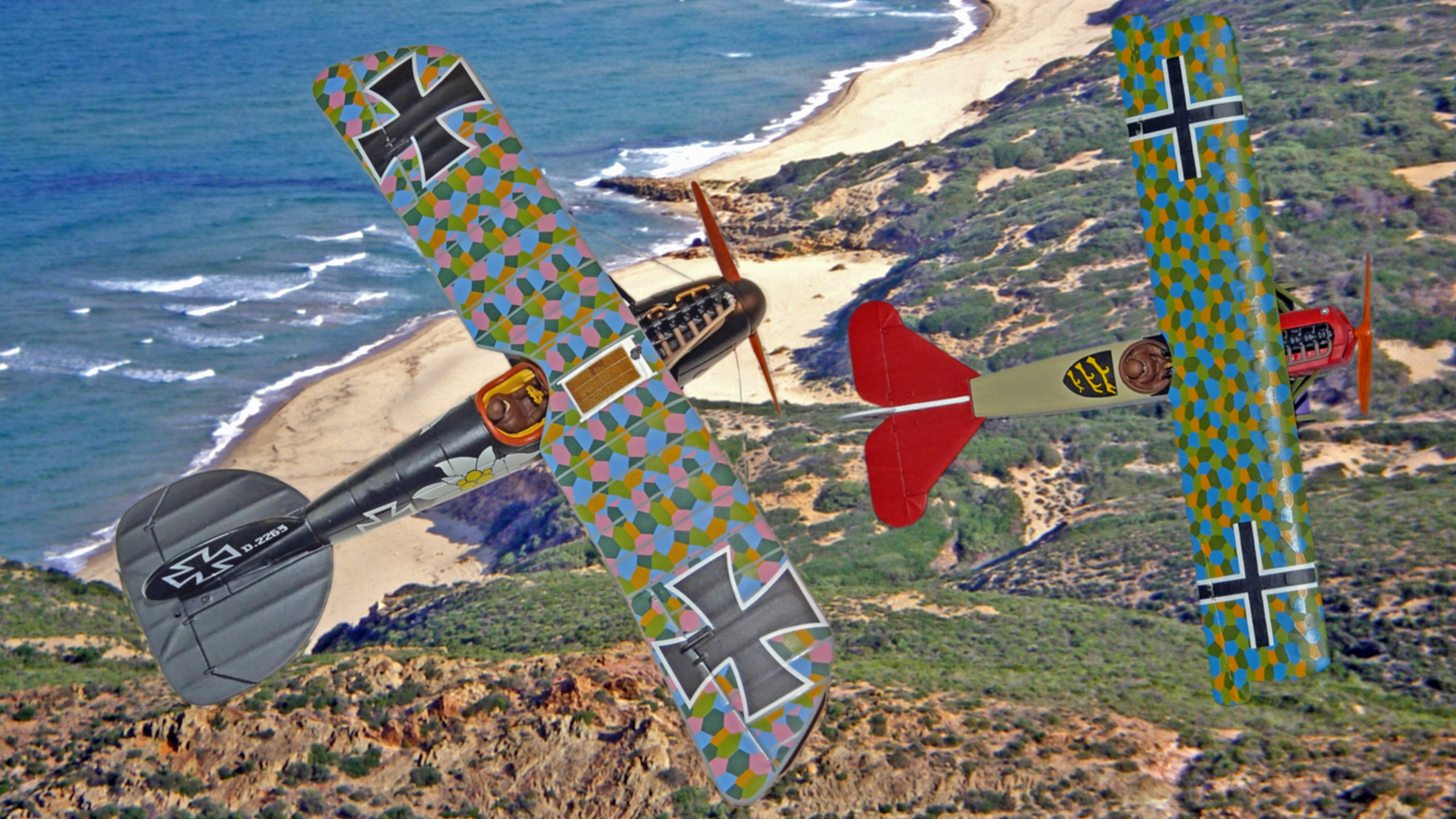Contents
- Contenuti
I can't define myself a modeler. As a boy, I assembled tens of 1/72 kits, almost exclusively by Airfix, but I wasn't patient nor skilled enough to obtain good results.
Despite my fondness for aeronautics, I never honed my skills, and after 40+ years without building a kit today I'm worse than ever.
Since the time when I read Kenneth Munson's book about the WWI fighters, I've been fascinated by the lozenge camouflage (https://en.wikipedia.org/wiki/Lozenge_camouflage) sported by many German and Austrian aircraft.
The exact look of its versions is a still debated subjects, and much can be found by googling. One thing is sure: both the use of full-wing decals and the painstaking painting of each lozenge, even though masks may help, is a matter for serious modelers.
Not being one, I looked for pre-built and pre-painted models of suitable quality, and I was delighted to find the Corgi model pictured here under, at a reasonable price (under 70 £).
The model reproduces the plane of Otto Kissenberth, credited with 20 aerial victories ().
Born in Landshut, Bavaria on 26 February 1893, he was one of the very few German pilots to fight wearing spectacles. A presentation of the Ace, died in 1919 in a mountaineering accident, is included in the presentation of this model by Corgi.
Non posso definirmi un modellista. Da ragazzo ho assemblato decine di kit da 1/72, quasi esclusivamente Airfix, ma non ero abbastanza paziente né abile da ottenere buoni risultati.
Nonostante la mia passione per l'aeronautica, non ho mai affinato le mie capacità e, dopo oltre 40 anni senza costruire un kit, oggi sono peggio che mai.
Fin da quando lessi il libro di Kenneth Munson sui caccia della I G.M., sono stato affascinato dalla mimetizzazione a losanghe (https://en.wikipedia.org/wiki/Lozenge_camouflage) esibita da molti aerei Tedeschi e Austriaci.
L'aspetto esatto delle sue versioni è un argomento ancora dibattuto, e si può trovare molto materiale cercando su Google. Una cosa è certa: sia l'uso di decalcomanie a tutt'ala, sia la penosa pittura di ogni losanga, sebbene ci si possa aiutare con maschere, sono faccende da modellista serio.
Non essendolo, ho cercato modelli preassemblati e dipinti di qualità adeguata, e son stato deliziato di trovare il modello Corgi raffigurato più sotto, a un prezzo ragionevole (sotto le 70 £).
Il modello riproduce l'aereo di Otto Kissenberth, accreditato di 20 vittorie aeree ().
Nato a Landshut, in Baviera, il 26 Febbraio 1893, è stato uno dei pochi piloti tedeschi a combattere portando gli occhiali. Una presentazione dell'Asso, morto nel 1919 in un incidente di montagna, è compresa nella presentazione di questo modello della Corgi.


❦